This post contains affiliate links. As an Amazon associate I may earn small commission from qualifying products at no cost to you.
Imagine sipping your morning coffee on a small city balcony, surrounded by fresh herbs, vibrant flowers, and crisp vegetables. Sounds dreamy, right? But let’s be real—urban gardening is like trying to fit an elephant in a shoebox. Space is limited, but that doesn’t mean your gardening ambitions have to be. Enter raised planter boxes—your golden ticket to a lush, green oasis in the middle of a concrete jungle. Whether you’re growing juicy tomatoes, fragrant basil, or simply want a splash of greenery, the right raised garden bed can make all the difference. If you enjoy adding personality to your garden, you’ll love these DIY spring planter ideas that blend creativity with functionality.
But which one should you choose? With so many options, picking the perfect planter can be overwhelming. Lucky for you, I’ve done the digging (pun absolutely intended) and rounded up the 10 best raised planter boxes for urban gardens. Whether you’ve got a balcony, a rooftop, or just a sliver of patio space, there’s a perfect option for you. Let’s dig in.
Table of Contents
What to Look for in a Raised Planter Box
Before you start shopping, here are a few key things to consider:
Best Materials for Planter Boxes
The material of your raised planter box affects its durability, aesthetics, and maintenance. Here are some common options:
- Wood: Natural and stylish, but needs treatment to prevent rot.
- Metal: Sleek and modern, resistant to pests, but can heat up in direct sun.
- Plastic: Lightweight, affordable, and low-maintenance.
- Composite: A mix of wood and plastic, offering durability and a wood-like appearance.
How Deep Should Your Raised Bed Vegetable Containers Be?
Make sure your planter fits your available space while providing enough room for your plants. If you’re growing deep-rooted veggies like carrots or tomatoes, go for a deeper bed (12-18 inches). For herbs and flowers, a shallower box (6-10 inches) will do just fine.
Why Drainage Matters in All Planters—From Terracotta to Fiberglass
Overwatering is one of the easiest ways to kill your plants. A good raised planter should have drainage holes or a design that prevents water from pooling.
Portable Rolling Herb Garden Ideas for Easy Gardening
If you’re short on space, look for planters on wheels so you can move them around easily. If bending down isn’t your thing, elevated planters save your back while making gardening more comfortable.
Aesthetic Appeal: From Rustic to Modern Minimalist Concrete Designs
Let’s be real—functionality is important, but so is style. Choose a planter that matches your space, whether that’s a rustic wooden box, a modern metal container, or a sleek, minimalist plastic design.
Now, let’s get to the good stuff!
1. Modular Stackable Vertical Towers for Any Type of Plant
If you’re looking for a sturdy and spacious raised garden bed that can be configured in different shapes, this option is a winner. Made from durable materials, it withstands weather changes, resists rust, and provides ample space for various plants. Whether you’re growing leafy greens or flowers, this one’s got you covered.
Best for: Multi-purpose gardening
Pros: Customizable layout, durable, modern design
Cons: Assembly required

2. Compact Raised Bed Vegetable Containers for Balconies and Decks
Short on space but big on gardening dreams? This elevated raised planter is perfect for small patios, balconies, and decks. It provides enough depth for herbs and flowers while keeping your plants off the ground, away from pests.
Best for: Compact spaces
Pros: Raised height for easy access, great for balconies
Cons: Limited space for deep-rooted plants
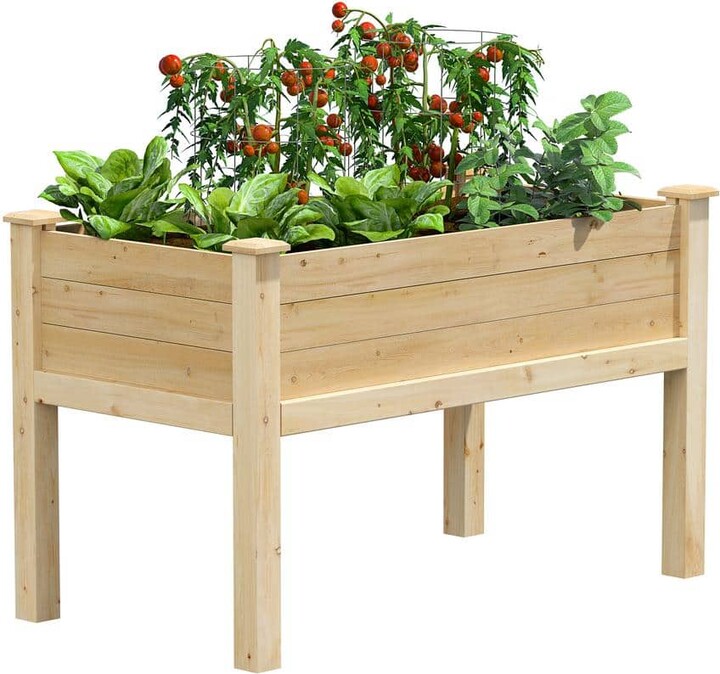
3.Self-Watering Window Box Ideas for Busy Gardeners
For the forgetful gardeners out there—this self-watering raised bed is an absolute game-changer. It comes with a built-in reservoir that ensures your plants get water when they need it, without you having to constantly check. Perfect for city dwellers who want to keep their plants thriving with minimal effort.

Best for: Busy plant parents
Pros: Self-watering, low maintenance, ideal for small gardens
Cons: Plastic material may not suit all aesthetics
4. Wooden Planter Boxes for a Rustic Farmhouse Look
Nothing beats the natural charm of wooden raised planters. This timeless design fits seamlessly into any space, providing a warm, rustic aesthetic. It’s deep enough for vegetables and sturdy enough to last, as long as it’s properly maintained.
Best for: Traditional garden lovers
Pros: Natural look, spacious, blends with any décor
Cons: Needs occasional wood treatment to prevent rot
5. Portable Rolling Herb Garden with Storage Space
Need flexibility? This raised bed on wheels lets you move your plants around easily—whether to chase the sunlight or make space for an outdoor gathering. With a storage shelf underneath, it’s also great for keeping your gardening tools organized.
Best for: Those who like to rearrange their space
Pros: Easy mobility, extra storage, great for small spaces
Cons: Limited planting area

6. Modern Minimalist Concrete Planters for City Living
For those who prefer sleek, contemporary designs, this metal raised planter is a fantastic choice. It’s resistant to pests, durable against harsh weather, and offers a polished look that suits modern outdoor spaces.
Best for: Urban gardens with a minimalist aesthetic
Pros: Pest-resistant, durable, stylish design
Cons: Can heat up in direct sunlight

7. Large Outdoor Rectangular Planters for Root Vegetables
Serious about growing root vegetables like carrots, potatoes, or tomatoes? You’ll need something with extra depth. This deep planter provides plenty of room for plants with extensive root systems while still fitting into a small space.
Best for: Deep-rooted veggies
Pros: Spacious, sturdy, great for larger plants
Cons: Requires a lot of soil to fill

8. Budget-Friendly Planter Options for Beginners
If you’re just dipping your toes into urban gardening and don’t want to commit to something pricey, this budget-friendly raised planter is a great option. It’s simple, functional, and gets the job done without breaking the bank.
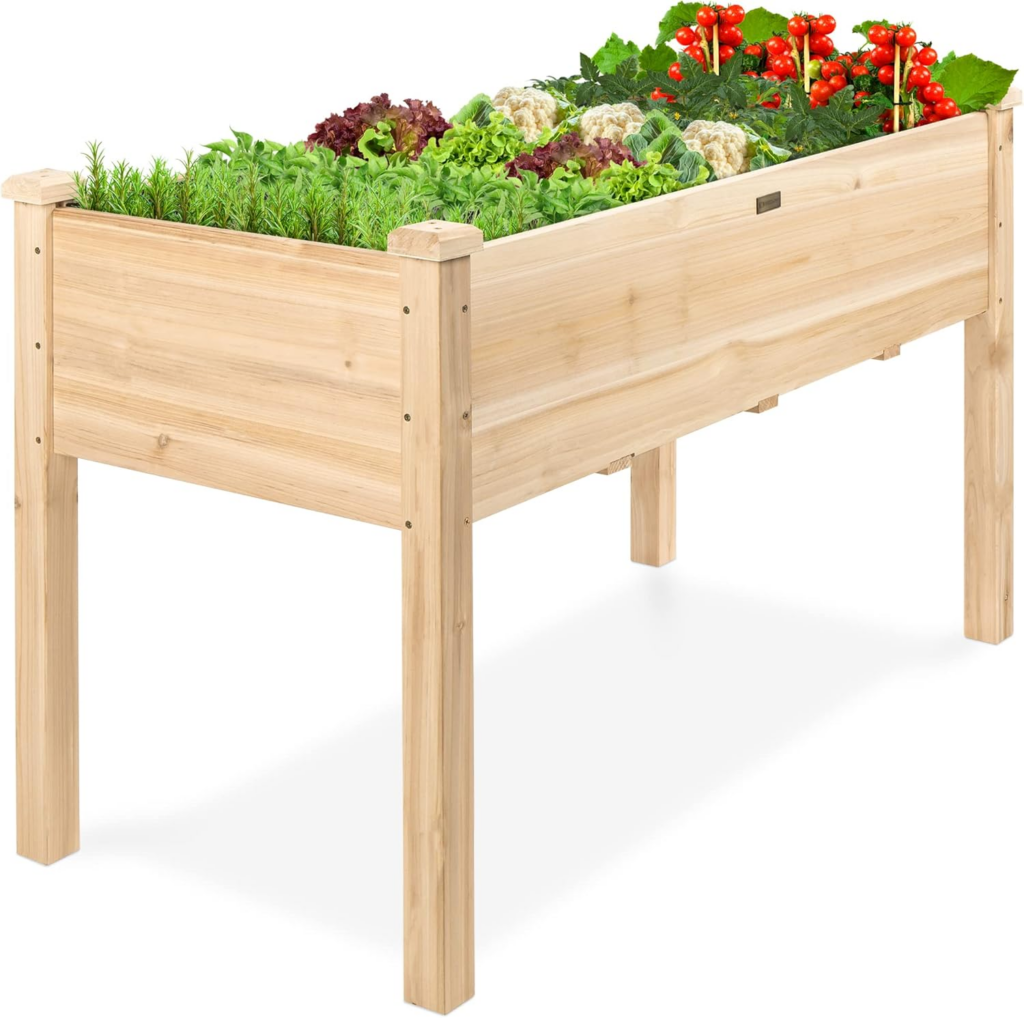
Best for: Beginners on a budget
Pros: Affordable, easy to assemble, no-frills design
Cons: May not last as long as premium options
9. Hanging Flower Baskets and Balcony Planters for Small SpacesBox
Living in an apartment with limited outdoor space? This compact raised bed is tailor-made for patios and balconies. It provides just enough space for growing herbs and small plants without overwhelming your setup.
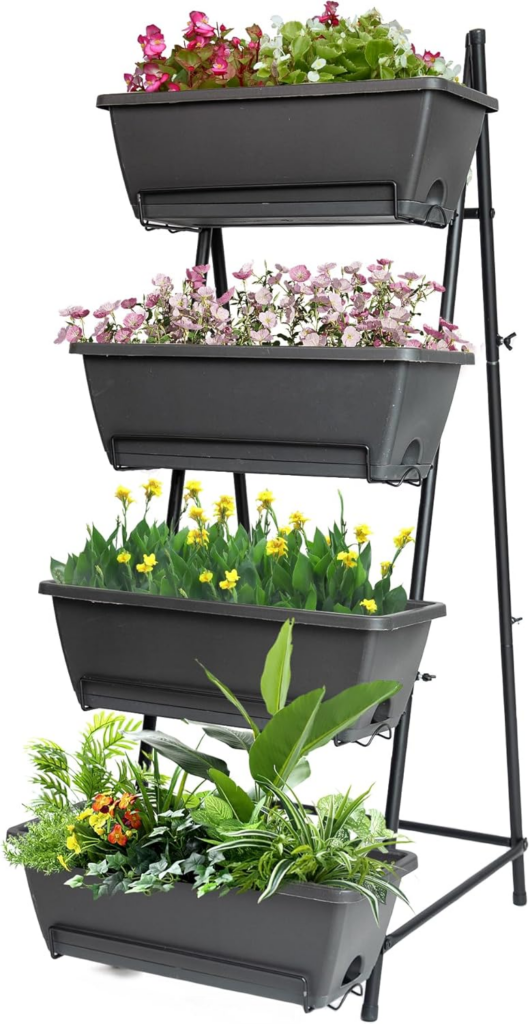
Best for: Apartment dwellers
Pros: Small footprint, stylish, perfect for herbs
Cons: Not ideal for larger plants
10. Steel Weathering Raised Beds for Harsh Conditions
If you live in an area with harsh weather conditions, this weather-resistant raised planter is built to withstand the elements. It’s rust-proof, warp-resistant, and designed to last for years.

Best for: Areas with extreme weather
Pros: Extremely durable, low maintenance, all-season use
Cons: Pricier than basic models
Simple Care Tips for All Planters
To keep your planter in top shape, follow these quick tips:
- Seal wooden planters with a non-toxic, food-safe sealant to prevent rotting.
- Elevate metal planters on bricks or pavers to improve air circulation and prevent rusting.
- Empty and clean plastic planters at the end of each season to prevent mold and buildup.
- Rotate your crops each season to maintain soil health and prevent nutrient depletion.
Your Planter Questions Answered: From Biodegradable Trays to Smart Self-Monitoring Pots
1. What materials are best for raised planter boxes?
The best materials depend on your needs:
- Wood: Looks great, but requires maintenance to prevent rotting.
- Metal: Durable and pest-resistant but can heat up in direct sunlight.
- Plastic: Affordable, lightweight, and weather-resistant, but not as aesthetic.
- Composite: A mix of wood and plastic, offering durability with a natural look.
2. How deep should a raised planter box be?
The depth of your planter depends on what you’re growing:
- Herbs & leafy greens: 6-10 inches
- Root vegetables like carrots: 12-18 inches
- Larger plants (tomatoes, peppers): 18+ inches
3. What’s the best soil mix for a raised garden bed?
A good mix is:
- 50% topsoil
- 30% compost
- 20% aeration material (like perlite or sand)
This ensures proper drainage, nutrient availability, and aeration.
4. Do raised planter boxes need drainage holes?
Absolutely! Poor drainage leads to root rot and mold. If your planter doesn’t have built-in drainage, drill a few small holes or add a layer of gravel at the bottom.
5. Can I grow perennials in a raised planter box?
Yes, as long as the soil depth supports deep roots. Perennials like lavender, hostas, and strawberries thrive in raised beds with proper drainage.
6. How do I keep pests out of my raised garden bed?
Try these pest-proofing hacks:
- Use fine mesh or netting to block insects.
- Elevate your planter to deter rodents.
- Add companion plants like marigolds to repel pests naturally.
7. How often should I water plants in a raised planter box?
Raised beds dry out faster than ground gardens. In summer, check soil moisture daily and water deeply 2-3 times per week. A self-watering planter can help maintain moisture.
8. Can I use a raised planter box indoors?
Yes! Just make sure it has proper drainage and use a tray to catch excess water. Indoor planters work great for herbs, microgreens, and small flowering plants.
9. How long do raised planter boxes last?
- Wood (Cedar, redwood): 5-15 years (longer if sealed properly)
- Metal: 15-20 years (rust-resistant coatings help)
- Plastic/Composite: 10-20 years
10. Are raised planter boxes worth the investment?
Absolutely! They:
- Save space
- Reduce back strain
- Improve soil quality
- Extend the growing season
For urban gardeners, raised beds make gardening accessible and rewarding.
Final Thoughts: Which Raised Planter is Best for You?
So, you’ve got options—but which one is the one?
- If you love low-maintenance gardening, go for a self-watering planter.
- If you’re short on space, an elevated or rolling planter is your best bet.
- If aesthetic matters, wooden planters give a classic, natural look.
- If you need something super durable, metal planters will last for years.
At the end of the day, the best raised planter is the one that fits your lifestyle and space.
What’s Next? Let’s Get Growing!
Now that you’ve got the knowledge, it’s time to bring your urban garden to life. Grab a planter, pick your plants, and get your hands a little dirty.
Got a favourite raised garden bed? Drop your recommendations in the comments! And if this guide helped, share it with a fellow plant lover. 🌿✨


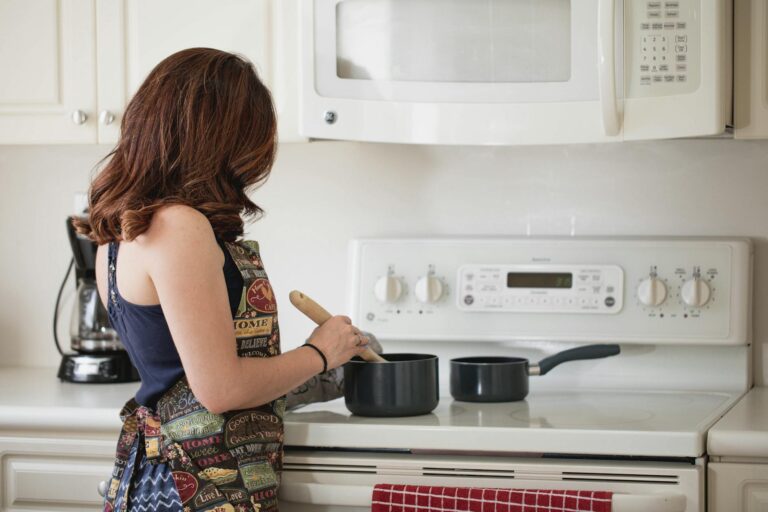

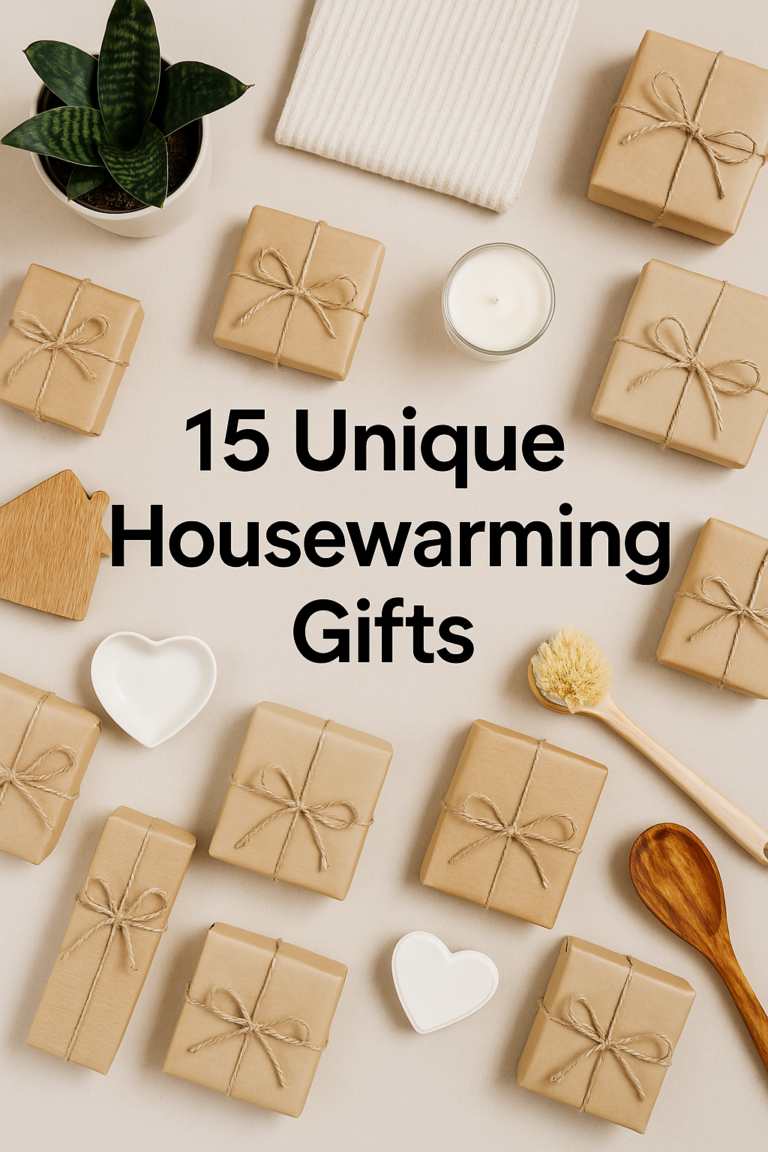




Awesome https://is.gd/N1ikS2
Good https://is.gd/N1ikS2
Good https://is.gd/N1ikS2
Good https://is.gd/N1ikS2
Awesome https://is.gd/N1ikS2
Awesome https://is.gd/N1ikS2
Good https://is.gd/N1ikS2